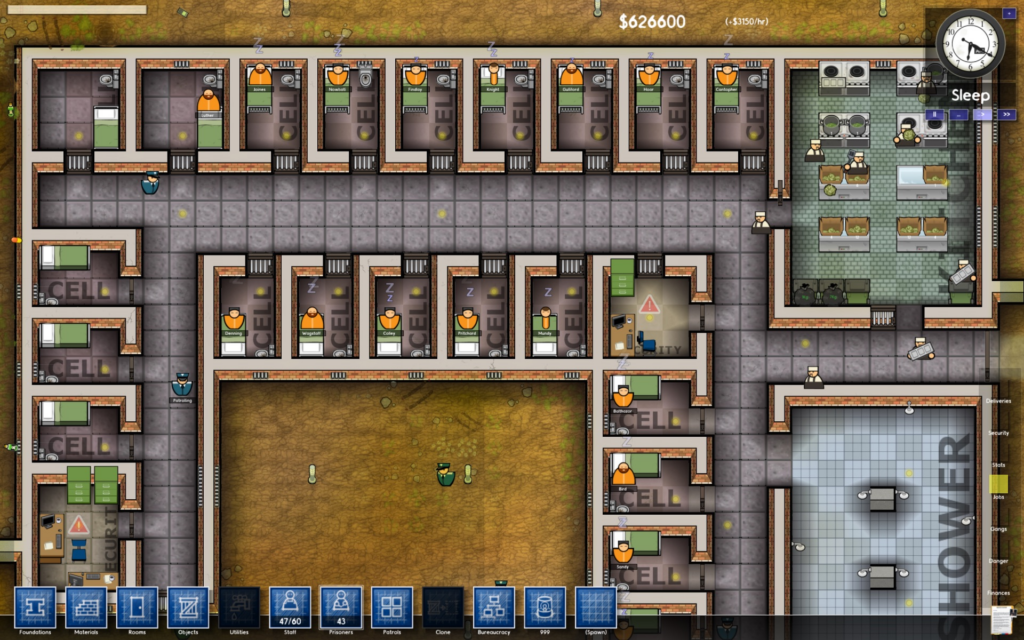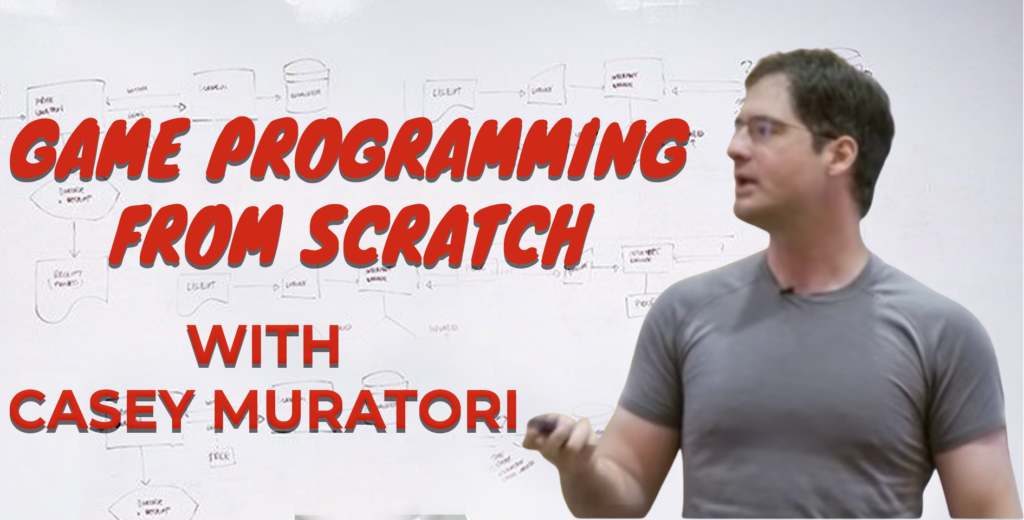So everyone in the games industry by now is aware that unity, the company that makes a very popular game engine, announced a new pricing scheme, whereby as well as charging you monthly for everyone who you wanted to employ to use their software, they also felt that you should pay them every time anyone, anywhere installed any software that had been made using their engine.
LOL
There is a lot of online outrage, and justifiably so, and to be honest, there is not nearly enough outrage enough. My perspective on this is different, because I’ve never used unity (I tried once and despised it), and have nothing at stake here. Every game I have made has had its engine coded by me, and I pay nobody anything for the privilege. I thought it might be worth blogging my view, because I think its a different one to everybody else. I’ve been thinking it over, and reckon the best way to articulate my thoughts is a series of separate points
Point #1: You probably don’t even need a commercial engine
A lot of people who read this will be indie game developers like me. A lot of you probably make 2D games. 2D games are great, they sell well, they can be very commercially successful, and there is little to no stigma making a 2D game. Some of the most popular games you can buy are 2D. 3D games are harder to make, from an engine POV, but if you don’t want to pay for a commercial engine, then there is a lot of mileage in 2D gaming. I’ve had a 25 year indie gaming career doing entirely 2D games, sold millions of copies, made millions of dollars. Production Line was isometric, but still just a bunch of sprites. None of the games I have shipped needed a commercial engine. Prison architect was a smash hit without needing a commercial engine. If you are wondering how successful you can be before needing to license an engine, the answer is: Hugely fucking rich and successful.

Point #2: If you need an engine, lots of free ones exist
Unity costs money, but many other engines do not. A good friend of mine paid $80 for a simple 2D game making program and has shipped 10 games with it, and made a living doing so. He is not the only one. There are more game engines than would possibly fit in a normal blog post, and no shortage of reviews from developers to guide you in making a choice. Free engines also have the bonus of coming with source code, so if you don’t like something, you can just change it.
Point #3: Lock-in is always a nightmare for consumers. Why are you surprised?
Every time a company talks about walled gardens, what they mean is they want to screw their customers. Starbucks will blatantly open a dozen unprofitable coffee shops in one town to force every competitor out of business, then shut the excess ones down and milk that profitable local coffee monopoly. Its a known business strategy, and its evil as fuck. Apple HATE the idea of shipping a USB connector with their phone (a supra-national government had to force them to do it), because they want to keep their customers locked into their ‘ecosystem’. The same was true of itunes, which they deliberately made crash, and buggy and slow on anything that wasn’t apple hardware. Its all about the ‘ecosystem’. Let me help you recontextualize this. When someone in a suit (or a black turtleneck) talks about their ‘ecosystem’, they actually mean a different word: Prison.
The ideal for these predatory businesses is to make it impossible for you to leave. Governments always have to intervene to prevent big business acting this way. Unity was VERY keen to force you to be reliant on them for everything. You buy your art assets in the UNITY store. You use the UNITY engine and the UNITY editor, and sell ad space using the UNITY ad system. Steam is similar. Steamworks is not a charitable gift. They want you to lock your achievements, your stats, your community, your interactions with your players all within steam. This way you will never leave. You can’t, they have you. Unity owns all your tech, steam owns your community, youtube owns your video channel. What do you own? Your office chair maybe? Expect to see Herman Miller asking for a share of your game revenue soon.

The actual walled garden apple execs enjoy thanks to us.
Point #4: Engine coding isn’t that hard
I knew we were heading for an apocalypse the minute we started seeing job adverts for ‘Unity programmer’. Thats not a language, it a proprietary product by a single, private company. If you really want to be 100% dependent on the whims of a private company for your future employability, go work there! Do not pretend that you can ‘exist independently within the ecosystem’. Unity LOVED the idea that people would stop being AI programmers or C++ programmers. Unity programmers have no place else to go..
..but actually, when you look at game engines, especially 2D ones for indie games, they are really *not that hard*. Its not 1990 any more. We are not having to worry about makes of mouse or video card. Directx makes things very simple for you. Its just a few hundred lines of code, at most, to have access to the graphics card, to be able to load in textures, play sounds, and respond to user input. This stuff is super-well-documented and TONS of sample code exists. Reading user input is really, really easy. Creating a sprite, loading a texture from a folder, and drawing it onscreen is actually pretty simple stuff. Particle systems and multithreading are NOT simple, but also not rocket science. Do not underestimate how much FREE stuff there is out there explaining how it all works…

Point #5: Software subscriptions were the line we shouldn’t have crossed
I remember back when adobe started trying to get people to subscribe to photoshop, thinking that this must be an April fools joke, or the rambling of a delusional coke-fueled imbecile who staggered into the board room. The idea that SOFTWARE was something that had to be rented instead of purchased was a joke to me.
Heres the thing: Microsoft are actually pretty fucking good at their job. Windows 11 will still play a game I made in 1998, without errors, or compatibility screwups or grumbling. If there ARE any issues, there are tons of compatibility options to make it work. Why mention this? Because its evidence that its pretty clear that you can write software that just keeps working, and working and working.
Software subscriptions are a joke. This is a way to force you to continually pay, without limit, for a package of software that should have been an affordable on-time purchase. Photoshop is an image editor, its not doing protein folding. Microsoft word is a word processor, thats it. This is stuff that we, as a technological society, kinda worked out how to do 20 years ago. The overwhelming majority of ‘new features’ added to Microsoft office in the last TWENTY years are useless, and go completely ignored by everyone. Photoshop was done, finished. So was Excel, and Word. But they wanted to find a way to make you keep paying…
I have no problem with unity, or any game-development engine/IDE saying ‘Hey guys! We just finished a BRAND NEW version of our popular and much loved engine. If you want to upgrade from your current version to this one, its $500!’. Thats a perfectly viable, perfectly understandable business. But I guess if you are TERRIBLE at running your business, stupidly think you need 8,000 staff at unity, blow a bunch of money on an ad-monetization company, buy a movie SFX company, then suddenly realize you are losing money like crazy, then you have no choice but to try and squeeze more money from existing customers on a regular basis. Don’t expect Unity’s CEO to understand game dev BTW. He is a pure-management type with a background at pepsi and Hagen Daz ice-cream, A golf company and sara-lee, the donuts people. He neither gives a fuck about, or understands the games industry.
Final point #6: Unity’s dysfunctional management and terrible business is their problem not yours.
Its pretty clear that the top management at unity do not code, do not make games, never have, never will, don’t care, and here is the very worst bit: are absolutely fucking clueless at running a business. Its laughable. My company is way, way more profitable than unity, and I manage that with just me. The important point is: THIS IS THEIR FAULT. Its not yours. People saying ‘to be fair, unity do lose money’ are implying that somehow game devs made them lose money. Nope. Game devs have been paying these people through-the-nose for years for an engine that is so bad that even unity could not make a game with it.
I really, really hope that this is a turning point and people tell unity to get stuffed. This is a company that cannot be trusted, should not be relied on, that you should not deal with. Now I know that they have ‘tech we wont explain’ to ‘track installs’ which no doubt phones home to unity, I am not even going to have any unity games installed on any hardware I own. This is a casino and F2P ad-tech company LARPing as a game dev tech firm. I do not trust them one bit. Asking for a subscription fee should have had them laughed out of the industry. This latest madness is just proof they will never change, only get way, way worse.